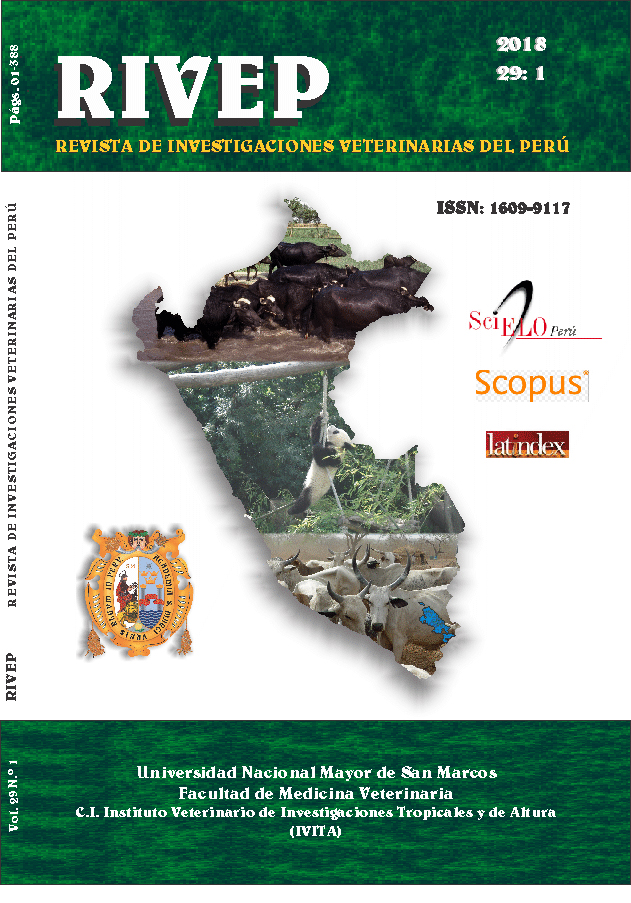Morphologic study of the pancreas of young and adults alpacas (Vicugna pacos)
DOI:
https://doi.org/10.15381/rivep.v29i1.14082Keywords:
alpaca, morphology, pancreasAbstract
The aim of this study was to morphologically characterize the pancreas of young (n=9) and adult (n=5) alpacas. In the macroscopic study, the pancreas was observed in situ to determine the shape and its relationship with other organs. In the microscopic study, routine histologic procedures were applied and histological sections of 5 μm thick were stained with Mayer-Eosin hematoxylin and Masson trichrome. The pancreas is divided in three sections: body, right lobe and left lobe which extend to the left plane, bordering the spleen and in greater proportion to the descendant colon. The hepatopancreatic duct presented two origins; one where the hepatic duct enters the pancreatic parenchyma and it leaves by the right lobe as the hepatopancreatic duct and another where the pancreatic duct joins with the hepatic duct as it emerges from the right lobe to form the hepatopancreatic duct. In the microscopic evaluation was observed that the pancreatic parenchyma is surrounded by a thin layer of connective tissue formed mostly by collagen fibers, which invaginate within the parenchyma forming lobes and pseudolobules, as well as cells with pyramidal shape accommodated in the form of acini. In the parenchyma was observed the islets of Langerhans randomly distributed. The intralobular and interlobular ducts were formed by simple cubic epithelium, and the hepatopancreatic duct was formed by an extensive irregular mucosa covered with columnar epithelium with microvilli. It is concluded that the alpaca pancreas shows morphological differences with other species such as ruminants, herbivores and domestic carnivores.Downloads
Downloads
Published
Issue
Section
License
Copyright (c) 2018 Gianmarco Panesi A., Alexander Chávez R., Miluska Navarrete Z., Nieves Sandoval C., Alberto Sato S., Francisco Santos R.

This work is licensed under a Creative Commons Attribution-NonCommercial-ShareAlike 4.0 International License.
AUTHORS RETAIN THEIR RIGHTS:
a. Authors retain their trade mark rights and patent, and also on any process or procedure described in the article.
b. Authors retain their right to share, copy, distribute, perform and publicly communicate their article (eg, to place their article in an institutional repository or publish it in a book), with an acknowledgment of its initial publication in the Revista de Investigaciones Veterinarias del Perú (RIVEP).
c. Authors retain theirs right to make a subsequent publication of their work, to use the article or any part thereof (eg a compilation of his papers, lecture notes, thesis, or a book), always indicating the source of publication (the originator of the work, journal, volume, number and date).










